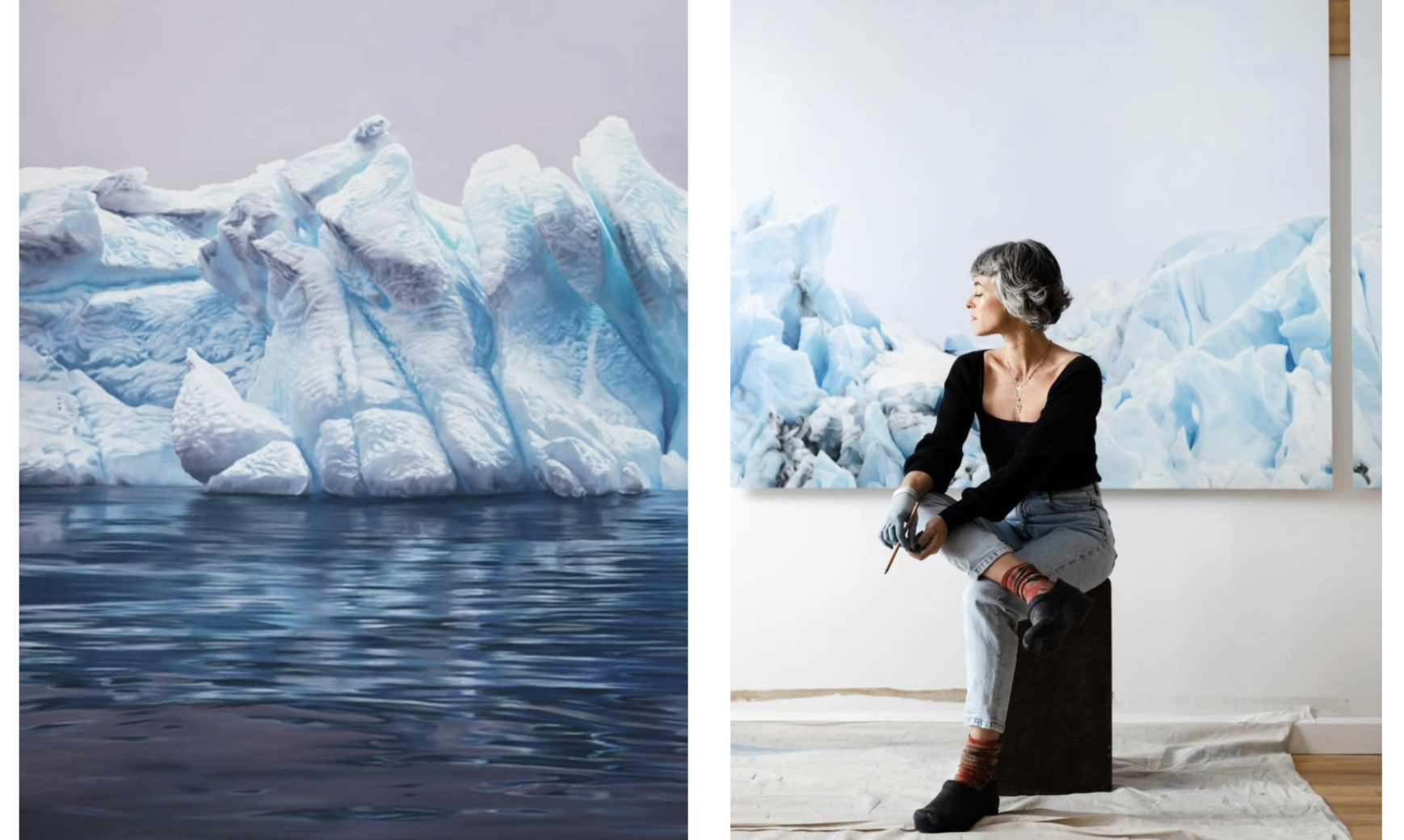Visual and Emotional: Zaria Forman’s Melting Landscapes
Zaria Forman is a contemporary American artist known for her stunning pastel drawings of fragile and remote landscapes affected by climate change. Inspired by childhood travels and the legacy of her mother, a landscape photographer, Forman has dedicated her career to visually capturing the beauty of disappearing environments—particularly polar ice formations. Her work is grounded in firsthand experience: she joins scientific expeditions to observe glacial melt and sea level rise, translating these encounters into monumental artworks. Forman’s art merges meticulous realism with emotional intensity, aiming not only to depict the physical world but also to evoke a sense of awe and urgency in viewers. Her pieces are regularly exhibited in galleries and featured in global climate advocacy efforts, reflecting her belief that art can inspire empathy and action more powerfully than data alone.
One of her most impactful pieces, Whale Bay, Antarctica No. 2, exemplifies how visual art can serve as a form of environmental activism. The drawing presents a serene yet haunting image of an iceberg set against soft skies and frigid waters, rendered entirely in pastel. The work’s stillness is deceptive—it captures a moment in time before inevitable transformation, as Antarctica’s ice continues to melt due to global warming. By portraying the iceberg with such clarity and scale, Forman invites viewers to witness both the majesty and vulnerability of the polar landscape. This emotional connection, formed through beauty and scale, mirrors the goal of environmental art: to close the distance between distant ecological crises and everyday human experience. Whale Bay, Antarctica No. 2 does not just represent melting ice—it urges us to protect what remains.
